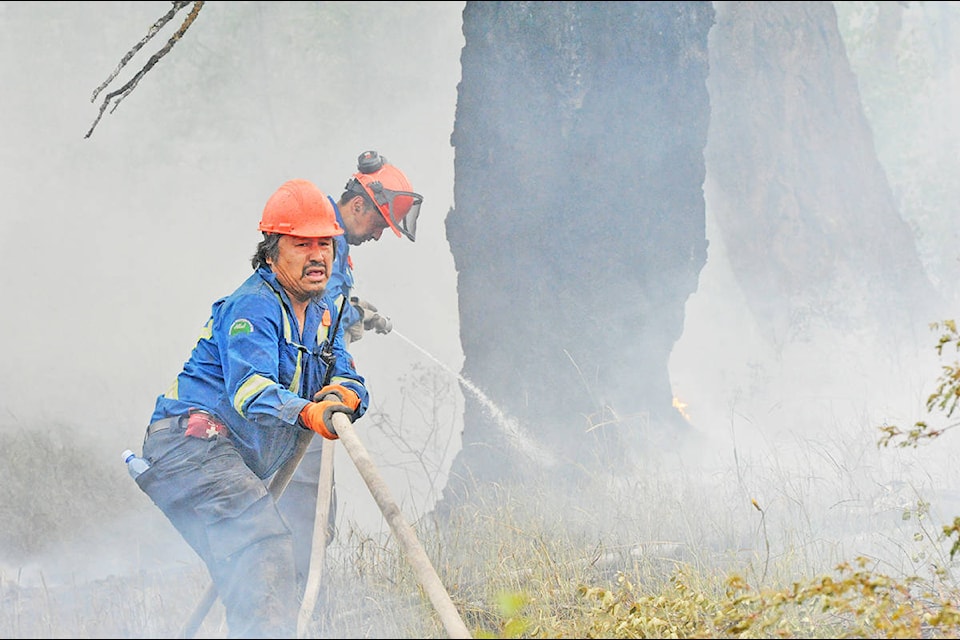For Alkali Resource Management (ARM) workers from Esk’etemc First Nation, fighting wildfires is in their blood.
“They love their work. They are very comfortable around fire,” said ARM manager Gord Chipman of his staff. “For them, fires are the most natural type of forest management.”
ARM has eight, five-member crews called “five packs” who have been dispatched to fight wildfires since the season took off July 7. The firefighters range in years of experience from one year to more than 30 years of fighting fires in the forest.
Chipman, a registered professional forester (RPF) himself and ARM manager for eight years, said ARM employs 20 year-round staff and 40 firefighters and has a standing offer with the BC Wildfire Service to fight fires.
Teams were initially sent out to fires near Kersley where Chipman said they were instrumental in saving houses and properties from wildfires.
“The home owners were really grateful they were there to help.”
Les Johnson, who usually works as a forestry tech, said being a firefighter is rewarding.
“I like doing this kind of work. It saves the communities, (we) try to save houses, try to save people’s properties. Try to keep the roads open for evacuees to go from town to town,” Johnson said, while containing a fire at Riske Creek recently.
For crew boss Alexis Alphonse, the excitement of the job is what keeps him fighting fires.
“It’s a good adrenaline rush when you are fighting a fire, like rank two, three, four, even rank five (fires) sometimes. Ya, it’s what I like doing.”
Chipman is putting young firefighters, such as Alphonse who has five years experience, into positions of leadership to help train them for management positions in the future.
“We are trying to train young guys to build our capacity. We want them to be managers and supervisors.”
Chipman said in the off season, firefighters work on tree spacing in their community forests and First Nation woodland tenures.
“That way we can hang on to our crews.”
Esk’etemc First Nation Douglas Johnson has been firefighting for more than thirty years.
“He’s perfectly comfortable here,” Chipman said as Johnson walked out to a logging road from a forest blackened by fire.
“This is his office.”
Johnson goes on to tell Chipman the fire he is fighting is like “a sleeping dragon right now. It’s catching its second wind.”
Chipman said when the men are out working, the women are busy in the community preparing to feed them upon their return.
“It unites the community when the guys are out fighting fires.”
